FOOD SAFETY • Scientific discipline describing handling,

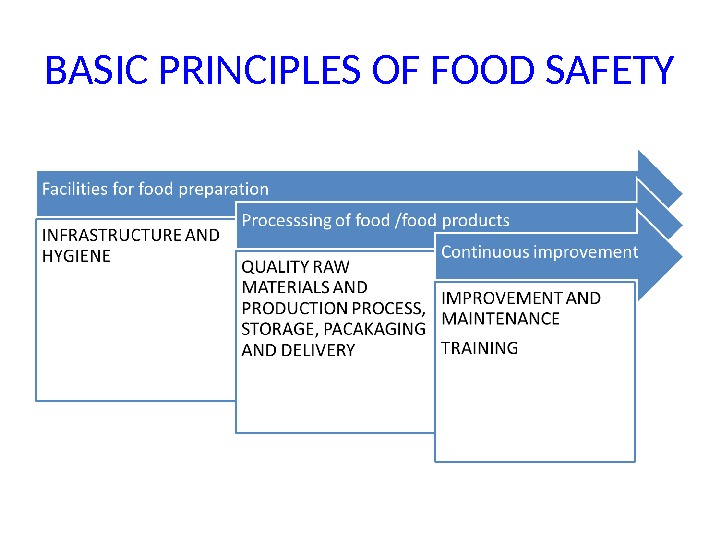



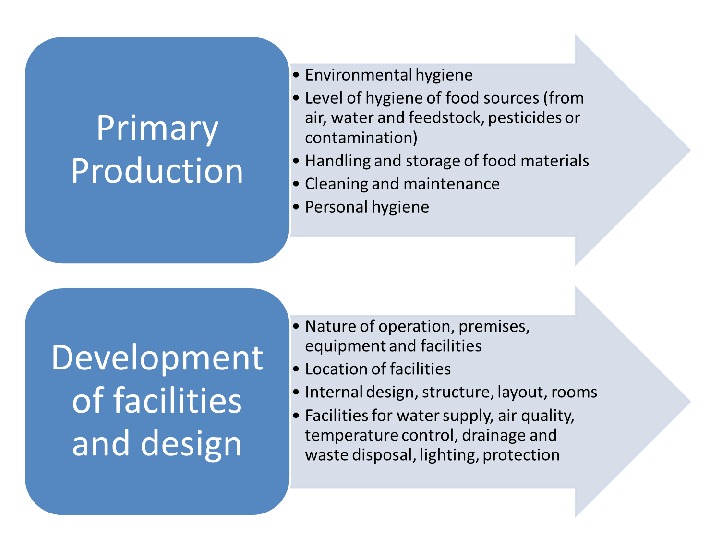

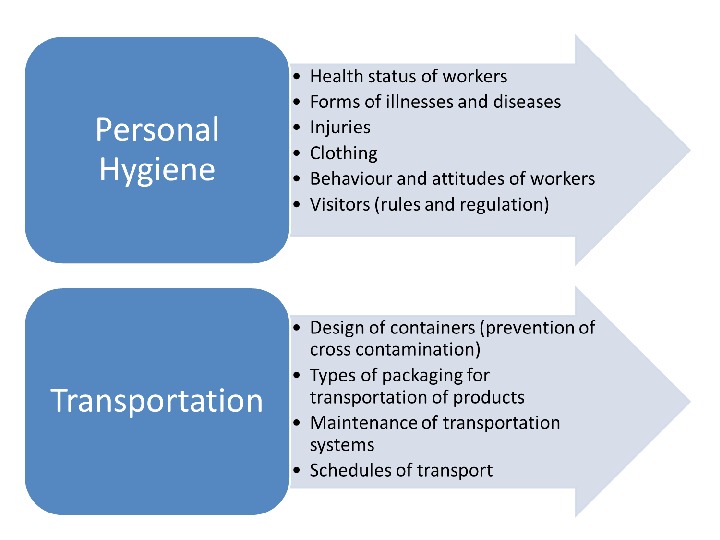



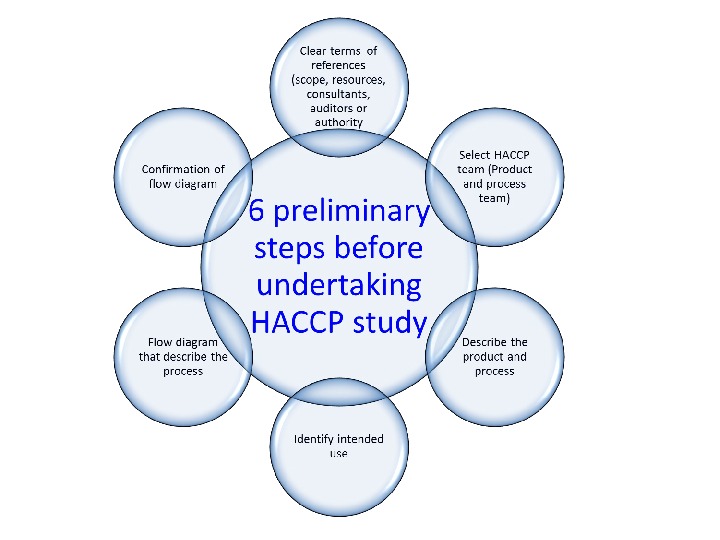
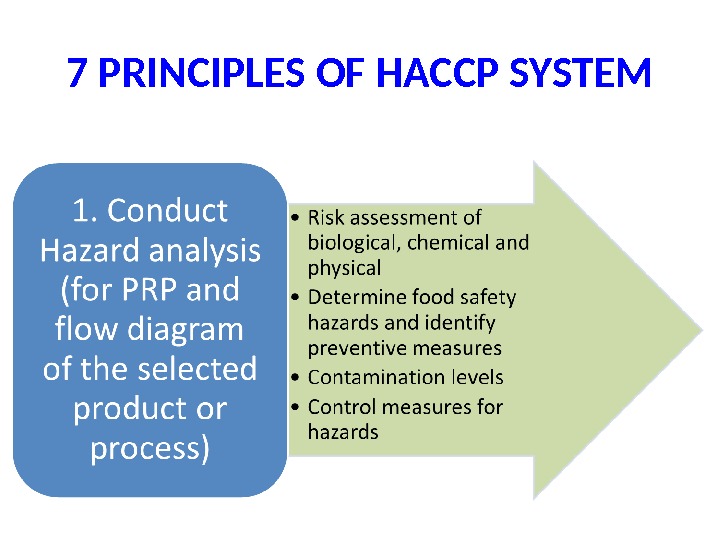

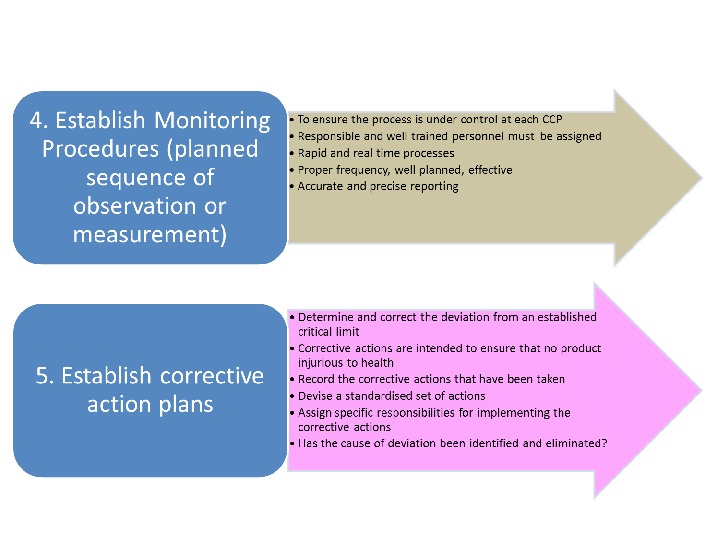

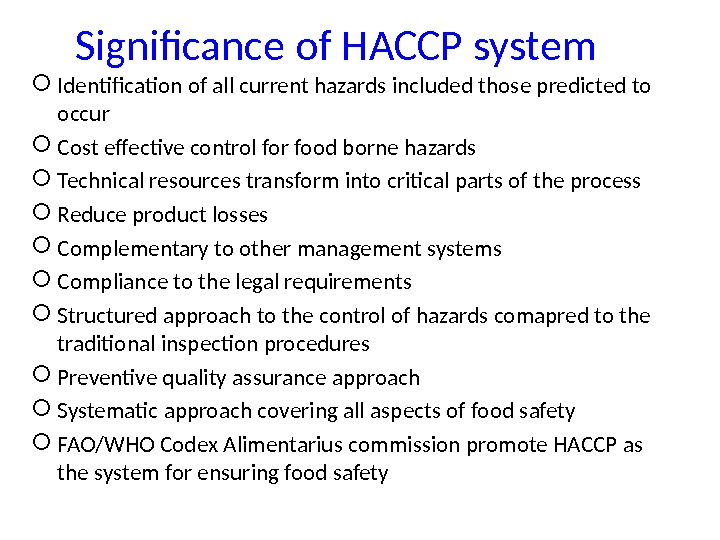


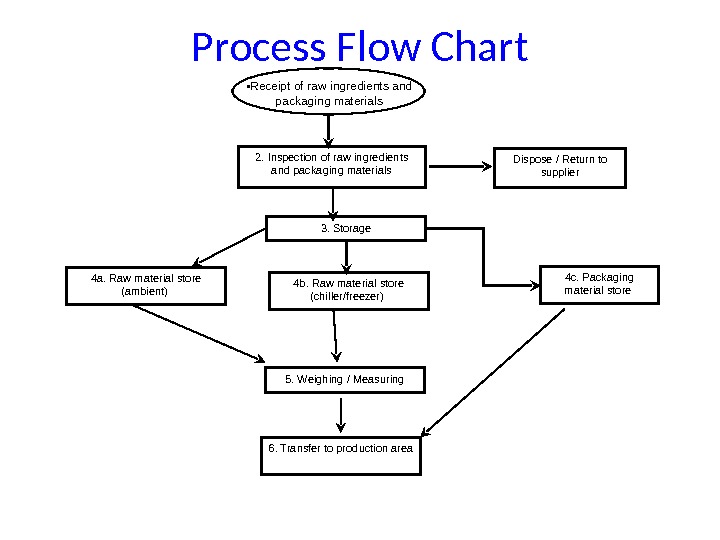

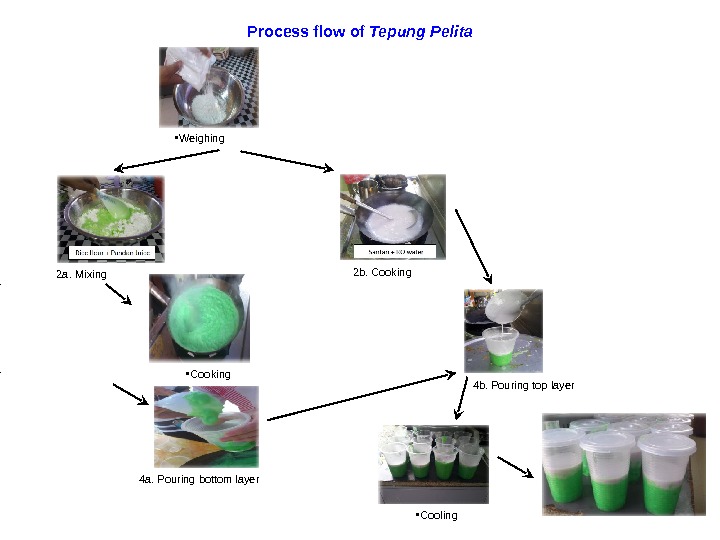




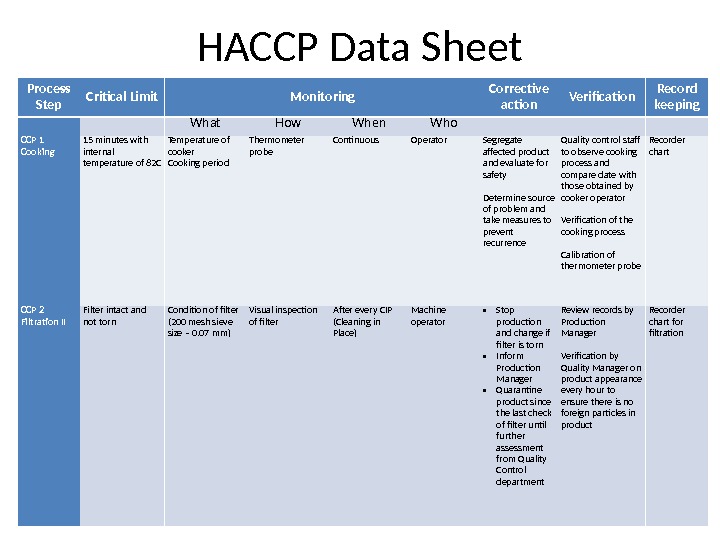
- Размер: 3.5 Mегабайта
- Количество слайдов: 27
Описание презентации FOOD SAFETY • Scientific discipline describing handling, по слайдам
 FOOD SAFETY • Scientific discipline describing handling, preparation and storage of food in way that prevent food borne diseases. • Food safety consideration: (origin of food) – food labeling, food hygiene, food additives and pesticide residues • Policies and guidelines for the management of import and export inspection and certification • Food hygiene : principles I. Prevent contaminating food from pathogens II. Separate raw and cooked food III. Cook food at appropriate length of time/temperature IV. Safe water and materials for food preparation • Food safety Standards – Codex I. Food is safe for human consumption II. Fair trade practices III. Wide diversity of activities and varying degree of risk IV. Specific code of food hygiene for each sector
FOOD SAFETY • Scientific discipline describing handling, preparation and storage of food in way that prevent food borne diseases. • Food safety consideration: (origin of food) – food labeling, food hygiene, food additives and pesticide residues • Policies and guidelines for the management of import and export inspection and certification • Food hygiene : principles I. Prevent contaminating food from pathogens II. Separate raw and cooked food III. Cook food at appropriate length of time/temperature IV. Safe water and materials for food preparation • Food safety Standards – Codex I. Food is safe for human consumption II. Fair trade practices III. Wide diversity of activities and varying degree of risk IV. Specific code of food hygiene for each sector
 BASIC PRINCIPLES OF FOOD SAFETY
BASIC PRINCIPLES OF FOOD SAFETY
 ISO 22000 – Food Safety Management Standards a. Food safety policy and achieve measurable objectives b. Well established document, implemented and continuous improvement c. Products/services must be safe d. Proactive and innovative, risk avoiding and prevention oriented e. Integrates the Codex Alimentarius Commission’s 7 principle of HACCP and Pre-Requisite Program (PRP) f. PRP refers to Good Hygienic Practice (GHP), Good Agricultural Practice (GAP), Good Manufacturing Practice (GMP), Good Distribution Practices (GDP), and good Trading practices (GTP) g. PRP has 8 general principles of food hygiene
ISO 22000 – Food Safety Management Standards a. Food safety policy and achieve measurable objectives b. Well established document, implemented and continuous improvement c. Products/services must be safe d. Proactive and innovative, risk avoiding and prevention oriented e. Integrates the Codex Alimentarius Commission’s 7 principle of HACCP and Pre-Requisite Program (PRP) f. PRP refers to Good Hygienic Practice (GHP), Good Agricultural Practice (GAP), Good Manufacturing Practice (GMP), Good Distribution Practices (GDP), and good Trading practices (GTP) g. PRP has 8 general principles of food hygiene
 ISO 22000 REVIEW HACCP PLANS
ISO 22000 REVIEW HACCP PLANS





 GMP – Good manufacturing Practices
GMP – Good manufacturing Practices
 HACCP – Hazard Analysis and Critical Control Point • A systematic preventive approach to food safety and biological, chemical and physical hazards in production processes that may cause the finished product to be unsafe. • HACCP is the prevention of hazards rather than finished product inspection. HACCP can be used at all stages of a food chain from production to distribution • HACCP has been recognised internationally as tool for adapting traditional inspection methods to modern approaches • Focuses on health safety issues of a product and not the quality • Carry out 6 preliminary steps before undertaking a HACCP study
HACCP – Hazard Analysis and Critical Control Point • A systematic preventive approach to food safety and biological, chemical and physical hazards in production processes that may cause the finished product to be unsafe. • HACCP is the prevention of hazards rather than finished product inspection. HACCP can be used at all stages of a food chain from production to distribution • HACCP has been recognised internationally as tool for adapting traditional inspection methods to modern approaches • Focuses on health safety issues of a product and not the quality • Carry out 6 preliminary steps before undertaking a HACCP study

 7 PRINCIPLES OF HACCP SYSTEM
7 PRINCIPLES OF HACCP SYSTEM



 Significance of HACCP system Identification of all current hazards included those predicted to occur Cost effective control for food borne hazards Technical resources transform into critical parts of the process Reduce product losses Complementary to other management systems Compliance to the legal requirements Structured approach to the control of hazards comapred to the traditional inspection procedures Preventive quality assurance approach Systematic approach covering all aspects of food safety FAO/WHO Codex Alimentarius commission promote HACCP as the system for ensuring food safety
Significance of HACCP system Identification of all current hazards included those predicted to occur Cost effective control for food borne hazards Technical resources transform into critical parts of the process Reduce product losses Complementary to other management systems Compliance to the legal requirements Structured approach to the control of hazards comapred to the traditional inspection procedures Preventive quality assurance approach Systematic approach covering all aspects of food safety FAO/WHO Codex Alimentarius commission promote HACCP as the system for ensuring food safety
 The Concept of Food Chain and HACCP Food can get contaminated at any point along the food chain Preventive measures at any points become important
The Concept of Food Chain and HACCP Food can get contaminated at any point along the food chain Preventive measures at any points become important
 Product description Product Name Tepung Pelita Product Type Ready to Eat Packing Size 350 ml Raw materials / Ingredients Rice flour, coconut milk, pandan leaves, water, sugar and salt Process type Blending, mixing, filtering, heating (cooking and steaming, pouring, packing Product characteristics Appearance Taste Aroma Two layers – whitish top layer and greenish bottom layer Normal coconut milk and pandan taste No off flavour Packaging system Primary packaging: 350 ml disposable plastic cup Secondary packaging Carton Shelf-life Best consume on production date Storage condition Store in refrigerator below 4°C Distribution control Distribute in cool and ambient temperature Intended use Consume as desserts either hot or chilled Intended consumer General public Distribution Kelantan Labelling instruction for consumers N/A Mishandling possibilities Do not expose under direct sunlight
Product description Product Name Tepung Pelita Product Type Ready to Eat Packing Size 350 ml Raw materials / Ingredients Rice flour, coconut milk, pandan leaves, water, sugar and salt Process type Blending, mixing, filtering, heating (cooking and steaming, pouring, packing Product characteristics Appearance Taste Aroma Two layers – whitish top layer and greenish bottom layer Normal coconut milk and pandan taste No off flavour Packaging system Primary packaging: 350 ml disposable plastic cup Secondary packaging Carton Shelf-life Best consume on production date Storage condition Store in refrigerator below 4°C Distribution control Distribute in cool and ambient temperature Intended use Consume as desserts either hot or chilled Intended consumer General public Distribution Kelantan Labelling instruction for consumers N/A Mishandling possibilities Do not expose under direct sunlight
 Process Flow Chart 2. Inspection of raw ingredients and packaging materials Dispose / Return to supplier 3. Storage 4 a. Raw material store (ambient) 4 b. Raw material store (chiller/freezer) 4 c. Packaging material store 5. Weighing / Measuring 6. Transfer to production area • Receipt of raw ingredients and packaging materials
Process Flow Chart 2. Inspection of raw ingredients and packaging materials Dispose / Return to supplier 3. Storage 4 a. Raw material store (ambient) 4 b. Raw material store (chiller/freezer) 4 c. Packaging material store 5. Weighing / Measuring 6. Transfer to production area • Receipt of raw ingredients and packaging materials
 Pre-weight rice flour and salt Coconut milk Pre-weight rice flour and salt Water • Sieving 2 a. Dissolving 2 b. Filtration • Filtration I 3. Mixing • Sieving 2 a. Dissolving 2 b. Filtration I 3. Mixing 2 a. Pandan leaves blended with water 3. Cooking 4. Filtration II 9. Distribution 6. Cooling 5. Pouring 7. Packaging 8. Storage CCP 1 CCP 2 Process Flow Diagram: Preparation of coconut milk (top layer) and rice flour (bottom layer)
Pre-weight rice flour and salt Coconut milk Pre-weight rice flour and salt Water • Sieving 2 a. Dissolving 2 b. Filtration • Filtration I 3. Mixing • Sieving 2 a. Dissolving 2 b. Filtration I 3. Mixing 2 a. Pandan leaves blended with water 3. Cooking 4. Filtration II 9. Distribution 6. Cooling 5. Pouring 7. Packaging 8. Storage CCP 1 CCP 2 Process Flow Diagram: Preparation of coconut milk (top layer) and rice flour (bottom layer)
 Process flow of Tepung Pelita • Weighing 2 a. Mixing • Cooking 4 a. Pouring bottom layer 2 b. Cooking 4 b. Pouring top layer • Cooling
Process flow of Tepung Pelita • Weighing 2 a. Mixing • Cooking 4 a. Pouring bottom layer 2 b. Cooking 4 b. Pouring top layer • Cooling
 Process Step Potential Hazards Rational for inclusion or exclusion as hazard Is this a significant hazard? (Yes / No) Receiving raw ingredients B – Microorganism growth in raw material Microbe growth on raw material if no proper storage condition in delivery truck No P – Damage on raw materials Due to mishandling during transfer No C- None identified Not applicable N/A Unloading B – None identified Not applicable N/A P – Foreign matter Controlled by pre-requisite programmes No C- None identified Not applicable N/A Raw material storage B – None identified Not applicable N/A P – Damage on items; contamination from pest, dust and sand Controlled by pre-requisite programmes No C- None identified Not applicable N/A Raw material – storage in freezer and chiller B – Microbial growth when not stored at appropriate temperature Yes P – Contamination from pest infestation, sand dust Controlled by pre-requisite programmes No C- None identified Not applicable N/A Weighing B – Microbial contamination Due to unhygienic handling and cross contamination from workers and utensils; Controlled by pre-requisite programmes No P – Contamination from pest infestation and foreign materials such as dirt, hair and debris Due to improper personal hygiene practice by workers and cross contamination from utensils and environment; Controlled by pre-requisite programmes No C- None identified Not applicable N/A Transfer to production area B – None identified Not applicable N/A P – None identified Not applicable N/A C – None identified Not applicable N/AHazard Analysis: Receipt of raw ingredients and packaging materials
Process Step Potential Hazards Rational for inclusion or exclusion as hazard Is this a significant hazard? (Yes / No) Receiving raw ingredients B – Microorganism growth in raw material Microbe growth on raw material if no proper storage condition in delivery truck No P – Damage on raw materials Due to mishandling during transfer No C- None identified Not applicable N/A Unloading B – None identified Not applicable N/A P – Foreign matter Controlled by pre-requisite programmes No C- None identified Not applicable N/A Raw material storage B – None identified Not applicable N/A P – Damage on items; contamination from pest, dust and sand Controlled by pre-requisite programmes No C- None identified Not applicable N/A Raw material – storage in freezer and chiller B – Microbial growth when not stored at appropriate temperature Yes P – Contamination from pest infestation, sand dust Controlled by pre-requisite programmes No C- None identified Not applicable N/A Weighing B – Microbial contamination Due to unhygienic handling and cross contamination from workers and utensils; Controlled by pre-requisite programmes No P – Contamination from pest infestation and foreign materials such as dirt, hair and debris Due to improper personal hygiene practice by workers and cross contamination from utensils and environment; Controlled by pre-requisite programmes No C- None identified Not applicable N/A Transfer to production area B – None identified Not applicable N/A P – None identified Not applicable N/A C – None identified Not applicable N/AHazard Analysis: Receipt of raw ingredients and packaging materials
 Hazard analysis — Processing Process Step Potential Hazards Rational for inclusion or exclusion as hazard Is this a significant hazard? (Yes / No) Sieving — Rice flour — Pandan juice — Coconut milk B – None identified Not applicable No P – Plastics rope, physical impurities Controlled by pre-requisite programmes No C- None identified Not applicable N/A Dissolving B – None identified Not applicable N/A P – Foreign matter Controlled by pre-requisite programmes No C- None identified Not applicable N/A Filtration I B – None identified Not applicable N/A P – Foreign matter Controlled by pre-requisite programmes No C- None identified Not applicable N/A Mixing B – None identified Not applicable N/A P – Foreign matter Controlled by pre-requisite programmes No C- None identified Not applicable N/A Cooking / Heating B – Pathogen survival (Staphylococcus aureus, E. coli, Salmonella) Pathogens that survive the cooking process will not be eliminated at subsequent processing step. Processing time and temperature may not be sufficient to kill vegetative pathogens Yes
Hazard analysis — Processing Process Step Potential Hazards Rational for inclusion or exclusion as hazard Is this a significant hazard? (Yes / No) Sieving — Rice flour — Pandan juice — Coconut milk B – None identified Not applicable No P – Plastics rope, physical impurities Controlled by pre-requisite programmes No C- None identified Not applicable N/A Dissolving B – None identified Not applicable N/A P – Foreign matter Controlled by pre-requisite programmes No C- None identified Not applicable N/A Filtration I B – None identified Not applicable N/A P – Foreign matter Controlled by pre-requisite programmes No C- None identified Not applicable N/A Mixing B – None identified Not applicable N/A P – Foreign matter Controlled by pre-requisite programmes No C- None identified Not applicable N/A Cooking / Heating B – Pathogen survival (Staphylococcus aureus, E. coli, Salmonella) Pathogens that survive the cooking process will not be eliminated at subsequent processing step. Processing time and temperature may not be sufficient to kill vegetative pathogens Yes
 P – None identified Not applicable N/A C- None identified Not applicable N/A 1. Filtration II B – None identified Not applicable N/A P – Foreign matter If filter is broken or torn, foreign matter will not be filtered. This is the last filtration step before product is poured into container Yes C – None identified Not applicable N/A 1. Pouring B – None identified Not applicable N/A P – None identified Not applicable N/A C – None identified Not applicable N/A 1. Cooling B – Post process contamination with pathogens Controlled by pre-requisite programmes No P – Foreign matter Controlled by pre-requisite programmes No C – Household chemicals Controlled by pre-requisite programmes No 1. Storage B – Potential for materials to become contaminate during cold storage Not reasonably likely to occur, controlled by SOP No P – Potential for materials to become contaminate during cold storage Not reasonably likely to occur, controlled by SOP No C – Potential for materials to become contaminate during cold storage Not reasonably likely to occur, controlled by SOP No
P – None identified Not applicable N/A C- None identified Not applicable N/A 1. Filtration II B – None identified Not applicable N/A P – Foreign matter If filter is broken or torn, foreign matter will not be filtered. This is the last filtration step before product is poured into container Yes C – None identified Not applicable N/A 1. Pouring B – None identified Not applicable N/A P – None identified Not applicable N/A C – None identified Not applicable N/A 1. Cooling B – Post process contamination with pathogens Controlled by pre-requisite programmes No P – Foreign matter Controlled by pre-requisite programmes No C – Household chemicals Controlled by pre-requisite programmes No 1. Storage B – Potential for materials to become contaminate during cold storage Not reasonably likely to occur, controlled by SOP No P – Potential for materials to become contaminate during cold storage Not reasonably likely to occur, controlled by SOP No C – Potential for materials to become contaminate during cold storage Not reasonably likely to occur, controlled by SOP No
 CCP Determination Process / Step Hazard Question 1 Question 2 Question 3 Question 4 CCP (Yes / No) 1. Raw material storage (Freezer or chiller) B – Microbial growth Yes No 1. Cooking B – Pathogen survival ( Staphylococcus aureus, E. coli, Salmonella ) Yes — — Yes 1. Filtration II P – Foreign matter Yes — — Yes
CCP Determination Process / Step Hazard Question 1 Question 2 Question 3 Question 4 CCP (Yes / No) 1. Raw material storage (Freezer or chiller) B – Microbial growth Yes No 1. Cooking B – Pathogen survival ( Staphylococcus aureus, E. coli, Salmonella ) Yes — — Yes 1. Filtration II P – Foreign matter Yes — — Yes
 HACCP Data Sheet Process Step Critical Limit Monitoring Corrective action Verification Record keeping What How When Who CCP 1 Cooking 15 minutes with internal temperature of 82 C Temperature of cooker Cooking period Thermometer probe Continuous Operator Segregate affected product and evaluate for safety Determine source of problem and take measures to prevent recurrence Quality control staff to observe cooking process and compare date with those obtained by cooker operator Verification of the cooking process Calibration of thermometer probe Recorder chart CCP 2 Filtration II Filter intact and not torn Condition of filter (200 mesh sieve size – 0. 07 mm) Visual inspection of filter After every CIP (Cleaning in Place) Machine operator • Stop production and change if filter is torn • Inform Production Manager • Quarantine product since the last check of filter until further assessment from Quality Control department Review records by Production Manager Verification by Quality Manager on product appearance every hour to ensure there is no foreign particles in product Recorder chart for filtration
HACCP Data Sheet Process Step Critical Limit Monitoring Corrective action Verification Record keeping What How When Who CCP 1 Cooking 15 minutes with internal temperature of 82 C Temperature of cooker Cooking period Thermometer probe Continuous Operator Segregate affected product and evaluate for safety Determine source of problem and take measures to prevent recurrence Quality control staff to observe cooking process and compare date with those obtained by cooker operator Verification of the cooking process Calibration of thermometer probe Recorder chart CCP 2 Filtration II Filter intact and not torn Condition of filter (200 mesh sieve size – 0. 07 mm) Visual inspection of filter After every CIP (Cleaning in Place) Machine operator • Stop production and change if filter is torn • Inform Production Manager • Quarantine product since the last check of filter until further assessment from Quality Control department Review records by Production Manager Verification by Quality Manager on product appearance every hour to ensure there is no foreign particles in product Recorder chart for filtration
